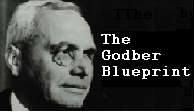Somehow or other, my attention has been drawn to this man recently:
 His name is John Brennan, and he’s an ex-director of the CIA.
His name is John Brennan, and he’s an ex-director of the CIA.
And he looks every inch the part. I think if I came across him anywhere, I’d take one look at him in and say: “I bet that guy is or was a director of the CIA!”
Normally you never see these sorts of people. They’re usually invisible. Nobody knows their names, or what they look like. Now they’re all over the place, in public life. Brennan wasn’t the first to break surface. That honour goes to James Comey, who is an ex-director of the FBI. Comey has even written a book. Not sure if Brennan has yet.
It’s a bit like, before a tidal wave or tsunami, the sea subsides and reveals all sorts of critters that live on the sea bed, which are normally never seen. That’s what Comeys and Brennans are.
Us Brits have got our own spooks in there too, flying the flag for us. We’ve got Christopher Steele. He’s not quite as big a big shot as Brennan or Comey, but I think Christopher Steele is as good a name as James Bond. It’s certainly got a nice ring to it.
Anyway, as more and more of these spooks break surface, I’m beginning to wonder if they should have their own reality TV show: called “Spooks” or something, on which they question – or rather interrogate – other spooks. So John Brennan would interrogate James Comey and Christopher Steele and other spooks on his weekly show. I think it would make gripping watching, particularly when the waterboarding starts.
Here’s Brennan being interrogated by Rachel Maddow:
I hardly ever watch Rachel Maddow. Did she always have a lopsided mouth? Or is it a disorder she’s only developed over the past year or so?
Anyway, during the interview Brennan said it was “treasonous” of Trump to meet up with Putin in Helsinki.
“…yes, sometimes my Irish comes out, and — in my tweets, and I did say that it rises to and exceeds the level of high crimes and misdemeanors and is nothing short of treasonous. … I didn’t mean that he committed treason, but it was a term that I used, nothing short of treasonous.”
What’s the difference between being “treasonous” and committing treason? Rachel Maddow asked that question, and said that she couldn’t see any difference.
I’m not sure what was treasonous about Trump meeting up with Putin. Trump meets up with lots of world leaders. Was that treasonous of him too?
Other spooks have been speaking up as well, and not all in support of Brennan:
Former Director of National Intelligence James Clapper threw former CIA Director John Brennan under the bus on Sunday, telling CNN’s “State of the Union” that “John and his rhetoric have become an issue in and of itself,” adding “John is subtle like a freight train and he’s gonna say what’s on his mind.”
Also:
Former CIA Director John Brennan risked damaging the intelligence community with his anti-Trump comments, retired Adm. Michael Mullen, former chairman of the Joint Chiefs of Staff, told “Fox News Sunday.”
Clapper. Mullen. That’s another couple of spooks breaking surface. These people definitely need their own TV show.
They’re all following in the footsteps of Donald Trump, of course. He had his own TV show. Now they all want own their TV shows too. It would be a new TV genre: interrogation TV. “Guests” would be fixed under a bright spotlight, and the interrogators would sit in the shadows. The questioning might start with the interrogator offering the “guest” a cigarette. Guests could include Edward Snowden, Julian Assange, and any current or former member of an intelligence agency. The relentless questioning, once it started, would go on all night.
Another spook who has broken surface is William Binney. He’s an ex-NSA whistleblower. And he seems to be everywhere online (here’s one example). There are lots of these guys.
And of course Q or QAnon is part of this emerging new spook genre. Q is already a cult figure. He has lots of devoted followers, who hang on his every word. And he is from Military Intelligence, of course. And he sits on one arm of Donald Trump’s White House armchair. He’s there all the time, although he’s invisible. And he may be a she. And he also may be a they. That’s part of the fun of Q: he’s an enigma, just like Watergate’s Deep Throat (in whose padded footsteps he is following).
Anyway, they all used to be invisible. And now they’re falling over each other to get themselves on prime time television, and write books, and “act as spokesmen” for people.















O/T The Daily Mail is now reporting “E-cigarettes raise the risk of mouth cancer by damaging DNA, study finds” http://www.dailymail.co.uk/health/article-6078945/E-cigarettes-raise-mouth-cancer-risks-damaging-DNA-study-finds.html?ito=social-twitter_mailonline
The small ‘study’ consisted of 5 subjects! “While it consisted of just five subjects, the new University of Minnesota study, however, uncovered evidence that e-cigarettes alone may be dangerous, too.” Nevertheless the daily Mail heralds the study as a reason to ban vaping…
Science Daily’s report on the ‘study’ states: To characterize chemical exposures during vaping, the researchers recruited five e-cigarette users. They collected saliva samples before and after a 15-minute vaping session and analyzed the samples for chemicals that are known to damage DNA. To evaluate possible long-term effects of vaping, the team assessed DNA damage in the cells of the volunteers’ mouths. The researchers used mass-spectrometry-based methods they had developed previously for a different study in which they evaluated oral DNA damage caused by alcohol consumption.” https://www.sciencedaily.com/releases/2018/08/180820085208.htm
This incredibly small sample means nothing. No cancer has ever been attributed to this ‘potential’ risk. To further exaggerate/confuse matters The Daily Mail attended to conflate this study with previous inconclusive study of 50,000 vapers and asserted that each year 50,000 people are diagnosed from oral cancer (while ignoring the potential causes f those cancers which are largely attributed to the HPV virus).
In short, this is another example of the fraudulent propaganda used to impose smoking and vaping bans despite actual evidence. This Daily mail item itself claimed that: “For decades now, we’ve known beyond a shadow of a doubt that cigarette smoke causes cancer” This is misleading and actually false. Cigarette smoke has never been ‘proven’ to ’cause’ cancer among primary smokers (the causal chain remains unknown, the studies ignore confounding data, and are heavily biased) and it has definitely never been proven as a casual factor from second hand smoke as the majority of studies fail to even demonstrate correlation let alone causation.
Tobacco control’s lies and fraudulent propaganda must be exposed.
I can’t quite work out what’s going on here. On the one hand, we have tiny studies like this, and the last one using a massive eight subjects for a “study” (must have really pushed the boat out for that one, n’est pas?), but then on the other hand we have our wonderful Government saying that they are considering allowing e-cigarettes to be available on prescription just like other NRTs are. Is it, perhaps, just an indication of a split in the anti-smoking movement – some of whom are “pro” e-cigarettes and others of whom are “anti” them? So, a bit of tit-for-tat amongst the zealots, maybe?
Or are the PTB desperately seeking some way of making e-cigarettes almost as much of a “sin” as real cigarettes, thus giving them an excuse to apply “sin taxes” to them? Perhaps they’re starting to feel the pinch now that fewer people are smoking (or at least, fewer are buying them over the counter)? Victims of that wild “success” that they’re always bragging about in bringing (official) smoker numbers down. There’s irony for you! Perhaps they’re privately hoping that scare tactics like this will return some vapers to the tobacco fold and re-bolster their diminishing tax take?
But either way, it’s difficult to work out exactly why there’s been a recent “rush” of news about e-cigs, some positive, some not. Certainly, any studies which use such teeny, tiny numbers of people and which come out with such inferred “definite” results so quickly, have all the hallmarks of having been done in a massive hurry and under huge pressure. Somebody, somewhere, with a fair degree of clout has clearly got hold of some researchers and given them the order to “find a link to something nasty, and find it fast!”
I wonder if any of the vapers tested in this study have now given up vaping and gone back to smoking again? Best of luck to them if they have. I have it on good authority (from an ex-smoker, turned ex-vaper) that e-cigarettes are much harder (“1000 times harder” to quote him exactly) to give up than real ones.
” William Binney. He’s an ex-NSA whistleblower. And he seems to be everywhere online (here’s one example)”
I liked the article overall, but
The reference to Bill Binney was a 25 minute you tube video. I cannot watch more than 2 minutes. So all that I know about Bill Binney is what Frank said (in the quotations). I suppose it was filler material.
Is he everywhere on line? I don’t really care, but I was hoping some one who does care would summarise it for me.
Yes I know I am a bit lazy.
Sorry Frank,
I doubt if you watched the Bill Binney interview either, Who has the time for that?
I did get up from the couch and Google Bill Binney. I got (About 402,000 results (0.41 seconds))
Way Tooo many for a proper spook, Clearly deep swamp.
An interesting article on exaggeration and inaccuracies in health reporting form Harvard’s Journalist Resource site… https://journalistsresource.org/studies/society/news-media/health-research-misinformation-tips?utm_source=JR-email&utm_medium=email&utm_campaign=JR-email"%20target="_self"
“Covering health research? Choose your studies (and words) wisely”
By Chloe Reichel
Many of the most popular news stories about health research include overstated findings or substantial inaccuracies, according to a study led by Noah Haber, a postdoctoral researcher at the Carolina Population Center at the University of North Carolina at Chapel Hill.
Haber and his colleagues had a panel of 21 reviewers, all of whom had master’s degrees, and the majority of whom were enrolled in or had completed a doctoral degree, look at the 64 most-shared news articles about health research on Facebook and Twitter in 2015, and the 50 studies that spawned these stories.
The reviewers focused on the methodology and language used in the research papers. They were interested in whether the studies could plausibly claim a “causal” connection – that the topic of interest caused or contributed to the health outcomes studied. The reviewers looked at how the authors described their results. Did they say or imply that one variable was a direct result of another variable when, in actuality, the authors had found only a correlation – a relationship of some sort?
Haber and his colleagues found widespread problems with the language used to describe the research findings, both in the studies and the resultant media coverage. Twenty percent of academic papers strongly implied causal results; 34 percent used language that was stronger than what the reviewers deemed appropriate.
Next, the reviewers evaluated the associated most-shared news articles to see whether they accurately reported the main features of the study. They also compared the language used in the articles to the language used in the papers, focusing on potential overstatements of causality.
In the news, 48 percent of articles overstated findings and 58 percent had one or more substantial inaccuracies such as misreporting the question.
“It’s really basically impossible to write about these particular studies in a way that does not mislead,” Haber said in a phone interview with Journalist’s Resource.
“I think that the thing that is most in [journalists’] power to do is the choice of what to write about and what not to write about it,” he said. “Stop writing about [academic] articles that are meaningless.”
“The real problem is when you’re using association as a euphemism for causality, and not technically using the word. That’s where the issue lies,” Haber added. These studies might avoid causal language, but, through their design, dog whistle a causal connection where there might not be one.
And even when academic researchers and reporters are careful with the language they use, technically accurate terminology can suggest inaccurate conclusions to the lay reader.
“Taking the place of your viewer, you have to understand how your viewer is going to interpret that information … And if what they absorb is not what the article is actually saying, then that’s sort of a misinformative way of reporting on an article, even if it’s the right technical language,” Haber said.
Haber believes there are a few clues journalists can pick up on to determine whether a study merits coverage:
It’s hard to explain the relationship between lifestyle-related, direct exposures and long-term outcomes – for example, drinking wine with dinner and the risk of developing heart disease later in life. “Anything that’s like chocolate, red wine, everybody’s favorite, and then, like, cancer mortality and cardiovascular disease … you really can’t disentangle these sorts of effects … and that’s, unfortunately, a lot of the stuff that people are really interested in.”
Studies that control for many confounding variables (other factors that could explain associations between topics of interest) might presuppose a causal relationship. In other words, controlling for many variables can hint that the researchers are interested in one specific effect to the exclusion of alternate explanations. “There is nothing wrong with controlling for confounding variables in and of itself,” Haber explained in an email. “However, when studies control for a LOT of things, it often indicates that the statistical strategy itself is weak and doomed to failure.”
If you must write about the latest study linking a favorite food or beverage to a surprising outcome, Haber suggested approaching it as a critical review. “There aren’t that many pieces that really do a critical review of studies as they come out,” he said. “They sort of assume that this new study finds the truth, whereas an alternative and pretty interesting article can be: this new study comes out, here is why it might be misleading, or here are some critiques of this study in this body of literature. And I think that actually is not only often more accurate and better information for lay audiences, it’s probably also click-y. A lot of this stuff can be quite interesting to share around.”
And, with these tips in mind, Haber said not to be too wary of research that attempts to find an association between two or more things. “Just because a work is associational does not necessarily mean that it is meaningless,” he said.
“You have to figure out what the assumed purpose [of a study] is. If the assumed purpose is [determining] causality, then a lot of the stuff is inappropriate to write about. But there are a lot of examples of interesting associations that are really useful by themselves, and are interesting and doing a lot of interesting stuff. One example is disparities research. It’s usually relatively simple associations, whether an association between wealth and things, which can be interesting by itself, because it’s useful for targeting.”
For journalists writing about a study, Haber suggested talking to one of the study’s authors: “If you think there’s a possibility that causality could apply here, ask the author directly, ‘Is this causality?’ Most of the time, they’ll tell you no. And then ask them, if no, [for] a person reading this article, what should this change about their lives? I’m actually really curious, if most academic authors were brought this question directly, I’m curious what a lot of people would say.”
He also thinks it’s a good idea to get their feedback on the accuracy of what you have written: “Going to the authors in the studies is a necessary condition, that is a thing you should definitely do pretty much all the time, and allowing them to critique the interpretation of what is written, and particularly focusing on what’s shareable and tweet able … is really important.”
If you’re balking at the idea of handing over your article (or parts of it) for review by an academic, Haber noted that peer reviewers of the study and methodological specialists are also good resources to check your work for accuracy.
However, Haber noted that not all third parties share the same level of expertise. He noted that certain sources are often repeatedly interviewed in coverage of various, broad research topics, and that they might not necessarily have the specific expertise or credibility to provide insight on a specific research study.
He also cautioned against taking a single study as the be-all, end-all: “We tend to have this idea in society that one study by itself — there are these great eureka moments — but really this stuff is built by consensus over many, many years. It’s much harder to gather the information about what the scientific consensus is on things versus one study … consensus, it’s a thing that’s a little bit more abstract.”
Haber pointed to Health News Review and FiveThirtyEight and The Incidental Economist as online news sites that avoid many common pitfalls of reporting on health research. Health News Review even has criteria by which they evaluate news write-ups of academic research, which reporters might find useful.
Last updated: August 20, 2018
Pingback: Revolutionary Ideas | Frank Davis
consensus, it’s a thing that’s a little bit more abstract.
… more abstract, as opposed to fact-based, I suppose, so why is that Haber fellow not spilling the beans about Tobcon’s, and the obviously complicit Tobcoms’, long-standing misinformation campaign about tobacco smoking’s supposed (& very long-term) ill effects? Omitting that, he simply missed out on the ultimate example to illustrate the point he’s trying to make.